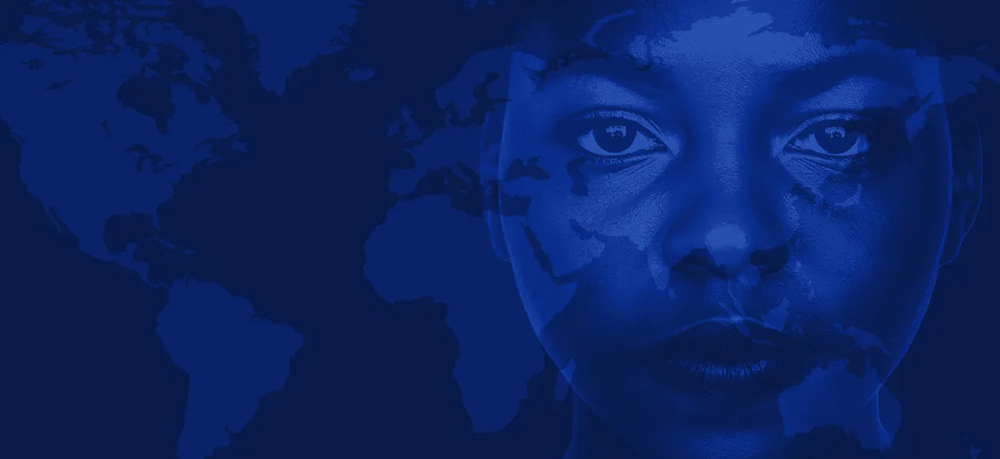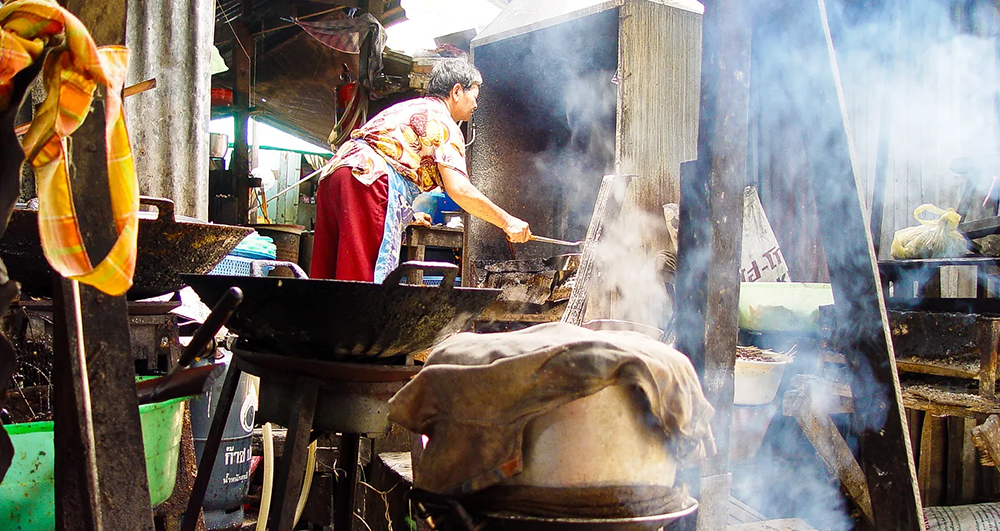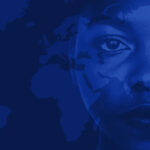As the Veritas Chronicles team has been working with members of the Nexten Summit community (nextensummit.com) — the first episode of which is in Dakar, Senegal, December 3-5, 2025 — we have noticed a distinctive optimism that permeates every conversation we experience about Africa, with Africans, in contrast to the guarded attitudes — a degree of hope tempered with a sense of “dis-ease” sometimes bordering on fear — that we observe in our interactions across the “Global North.”

“Western tech companies are turning inward again, now that the geopolitical situation has become so uncertain. This newfound ignorance is a big mistake, because the future lies in the Global South, where 90 percent of the world’s youth live. It is bursting with innovative power.”
Payal Arora | Professor of Inclusive AI Cultures at Utrecht University, Netherlands
The optimism surrounding Artificial Intelligence (AI) in the Global South often contrasts sharply with the more cautious stance taken by the “establishment” in the Global North. This divergence isn’t merely a difference in outlook but stems from distinct historical contexts, pressing developmental needs, and varying perspectives on the nature and impact of the Fourth Industrial Revolution (4IR). While the Global North grapples with the potential disruption of established systems, the Global South sees AI as a powerful lever for transformative change, offering a unique opportunity to leapfrog traditional development stages and address deep-seated societal challenges.
Defining the Landscape: 4IR, Global North, and Global South
The Fourth Industrial Revolution (4IR) marks a profound shift in human history, characterized by the convergence of digital, physical, and biological technologies. Unlike previous industrial revolutions driven by steam, electricity, or early computing, the 4IR is defined by the unprecedented speed, scope, and systemic impact of technologies like AI, robotics, the Internet of Things (IoT), big data, and biotechnology. It promises to reshape industries, economies, and societies on a global scale.

The Global North generally refers to the economically developed countries, primarily found in North America, Western Europe, and parts of Asia (such as Japan and South Korea), alongside Australia and New Zealand. These nations are typically characterized by high per capita GDP, advanced infrastructure, mature industrial economies, and well-established regulatory frameworks. Their societies have largely navigated the challenges of previous industrial revolutions and possess complex, interconnected systems.
Conversely, the Global South encompasses the developing and emerging economies, largely concentrated in Africa, Latin America, and most of Asia. These nations often contend with lower income levels, significant income inequality, historical legacies of colonialism, and pervasive developmental challenges such as poverty, limited access to healthcare, educational disparities, and even chronic hunger.1 For them, technological advancement often presents a path to overcoming these long-standing obstacles.
The Wellspring of Optimism in the Global South
The Global South’s pronounced optimism regarding AI is not simply hopeful thinking but a pragmatic recognition of its potential to address fundamental development challenges and unlock new avenues for growth.
Addressing Foundational Gaps
For many nations in the Global South, AI isn’t just an efficiency tool; it’s a transformative solution to pressing societal issues. In healthcare, AI can revolutionize diagnostics and remote care delivery, particularly in rural areas lacking medical professionals. For instance, AI-powered tools can assist in early disease detection, bridging critical gaps in access to specialists. Similarly, in agriculture, AI can optimize crop yields through precision farming, analyzing soil conditions, weather patterns, and plant health, thereby combating food insecurity and improving livelihoods for millions of smallholder farmers. In education, AI offers the potential for personalized learning and broader access to educational content in underserved regions, helping to overcome literacy barriers. Furthermore, AI-driven fintech solutions can extend financial services to unbanked populations,2 fostering greater economic inclusion. The absence of extensive legacy infrastructure in some Global South countries paradoxically becomes an advantage, allowing them to “leapfrog” directly to cutting-edge AI solutions without the burden of dismantling outdated systems.
The absence of extensive legacy infrastructure in some Global South countries paradoxically becomes an advantage, allowing them to “leapfrog” directly to cutting-edge AI solutions without the burden of dismantling outdated systems.
Economic Diversification and New Horizons
Many Global South economies have historically relied on primary sectors like agriculture and raw material extraction, leaving them vulnerable to market volatility. AI offers a powerful avenue for economic diversification and the creation of high-value industries. It can foster vibrant tech startup ecosystems and digital economies, reducing reliance on traditional, less resilient sectors. While talent shortages exist, there’s a strong belief that investment in AI education and training can cultivate a skilled workforce capable of driving innovation. Moreover, paradoxical opportunities exist in the AI value chain, such as data labeling and annotation, which provide immediate economic opportunities and exposure to the broader AI landscape.
Catalyzing Societal Progress and Governance
AI is also viewed as a tool to enhance public services and improve governance. It can streamline administrative tasks, making public service delivery more efficient and potentially reducing bureaucracy. In the realm of environmental sustainability, AI-driven models can improve climate forecasting, support early warning systems for natural disasters, and optimize the deployment of renewable energy, directly contributing to the Sustainable Development Goals (SDGs).3
A Youthful and Digitally-Native Demography
The Global South often boasts a younger, more digitally literate population that is naturally receptive to new technologies. This demographic dividend can significantly accelerate AI adoption and foster grassroots innovation, making these societies fertile ground for technological advancement.
The Global North’s Cautious Approach
In contrast, the Global North’s establishment often approaches AI with greater caution, driven by a different set of concerns stemming from their already industrialized and digitalized economies.
A primary concern is job displacement. With established labor markets, the fear that automation will lead to widespread job losses in traditional industries is palpable. Furthermore, given their mature legal and social frameworks, Global North nations prioritize the development of robust ethical guidelines and regulatory frameworks for AI, focusing on issues like data privacy, algorithmic bias, accountability, and the responsible use of autonomous systems. There’s also a significant focus on how AI might exacerbate existing inequalities if access to technology and skills is not managed equitably. While the Global North has strong infrastructure, the immense investment required for advanced AI research, development, and deployment, along with concerns about the energy consumption of data centers, presents its own set of challenges. Ultimately, established economies and institutions tend to be more risk-averse, valuing stability and controlled integration over rapid, potentially disruptive change.
The Global North’s establishment often approaches AI with greater caution, driven by a different set of concerns stemming from their already industrialized and digitalized economies.
Illustrative Contrast: Newport vs. Hopeville
To illustrate this divergence, consider two fictional cities: “Newport” in the Global North and “Hopeville” in the Global South.
Newport is a thriving, well-established city with advanced infrastructure, high employment in traditional manufacturing, and a comprehensive regulatory environment. When AI is introduced, the immediate concerns are pragmatic and focused on preservation: “Will AI replace our skilled factory workers? How do we ensure the privacy of our citizens’ data when AI analyzes it? What regulations are needed for safe autonomous vehicles on our already crowded roads?” The focus here is on mitigating potential downsides and carefully integrating AI into complex, existing systems to avoid disruption.
Hopeville, on the other hand, is a rapidly developing city grappling with limited access to specialized medical care in rural areas, inefficient agricultural practices leading to food insecurity, and a young, growing population desperately seeking economic opportunities. When AI is discussed, the perspective is entirely different: “AI can help us diagnose diseases remotely, empowering community health workers and saving lives! AI can analyze our soil and weather patterns to significantly boost crop yields, lifting our farmers out of poverty! AI can create new tech jobs for our youth, giving them a pathway to a prosperous future!” Here, AI is not a potential threat but a powerful solution to urgent problems and a catalyst for rapid, transformative development.
Conclusion
The differing levels of optimism between the Global South and the Global North regarding AI are a reflection of their distinct developmental trajectories, societal needs, and tolerance for technological disruption. While the Global North prioritizes the careful integration of AI into established systems, focusing on regulation and risk mitigation, the Global South embraces AI as a potent tool for accelerated human flourishing, offering unprecedented opportunities to overcome historical challenges and build more prosperous, equitable societies. This contrast highlights a fundamental truth: the impact and reception of the Fourth Industrial Revolution are profoundly shaped by the context into which its technologies are introduced.
The Global South includes most of the countries of Africa, most of Latin America, and the majority of Asian countries. The term is generally characterized by lower economic development, significant income inequality (and often a history of colonialism). It includes almost 90% of the world population but only about 40% of GDP.






- Chronic hunger remains a devastating reality for a staggering number of people, almost exclusively concentrated in the Global South. Every day, more than 700 million people face chronic hunger globally, a figure that tragically increased by approximately 152 million between 2019 and 2023. The vast majority of these individuals reside in sub-Saharan Africa and South Asia, which bear the brunt of rising undernourishment. Countries like Sudan, South Sudan, Yemen, Afghanistan, and the Democratic Republic of Congo, are frequently cited as the most severe hunger hotspots, driven by a complex interplay of conflict, climate change, and economic shocks that disproportionately affect vulnerable populations in these regions. ↩︎
- It’s rather amazing, in this technologically developed world, where mobile phone access is almost universal, that almost one quarter of earth’s population remains unbanked, and therefore excluded from many basic services that most of us take for granted. ↩︎
- SDG’s refers to the United Nations 17 Sustainable Development Goals. ↩︎















